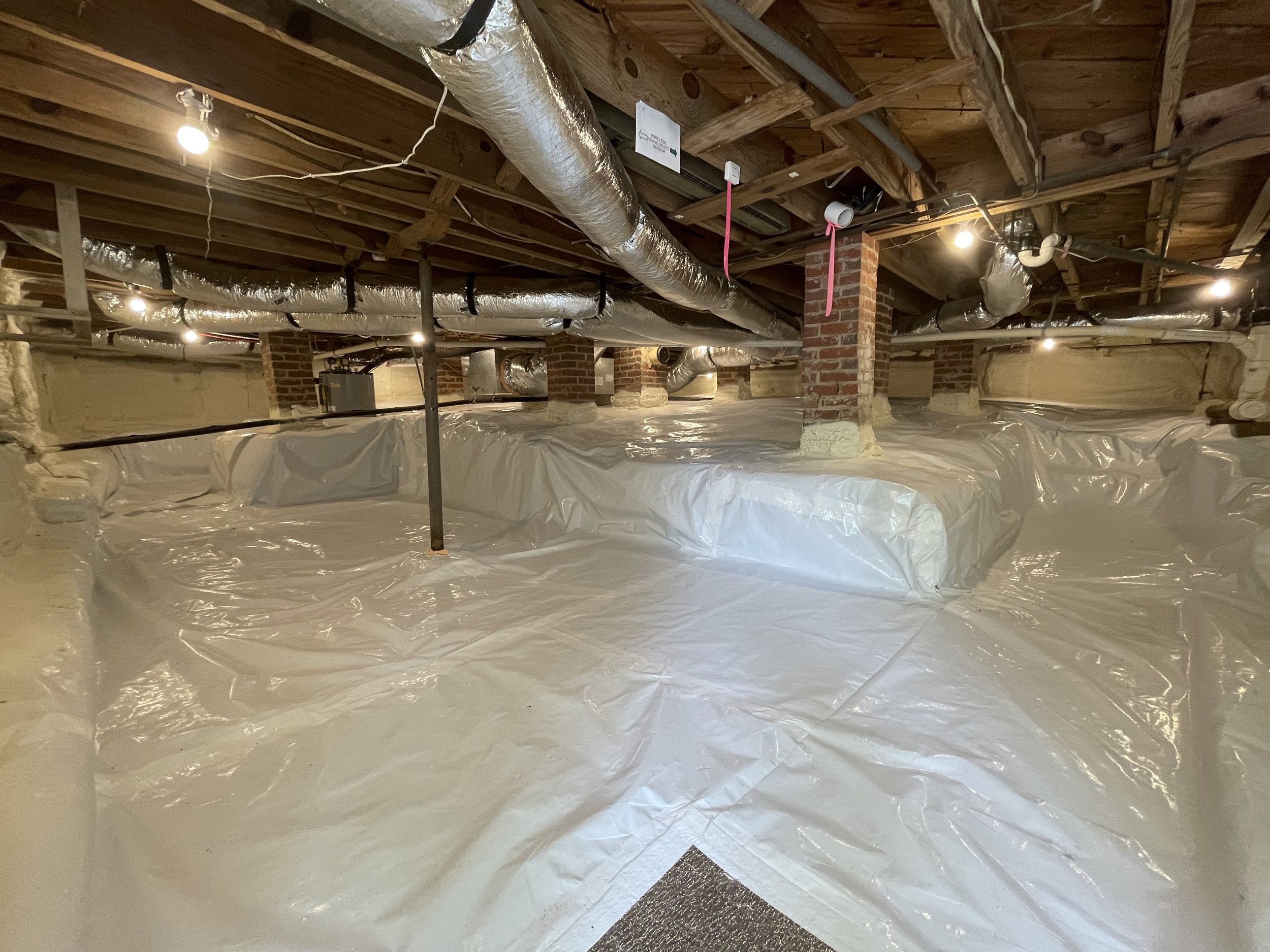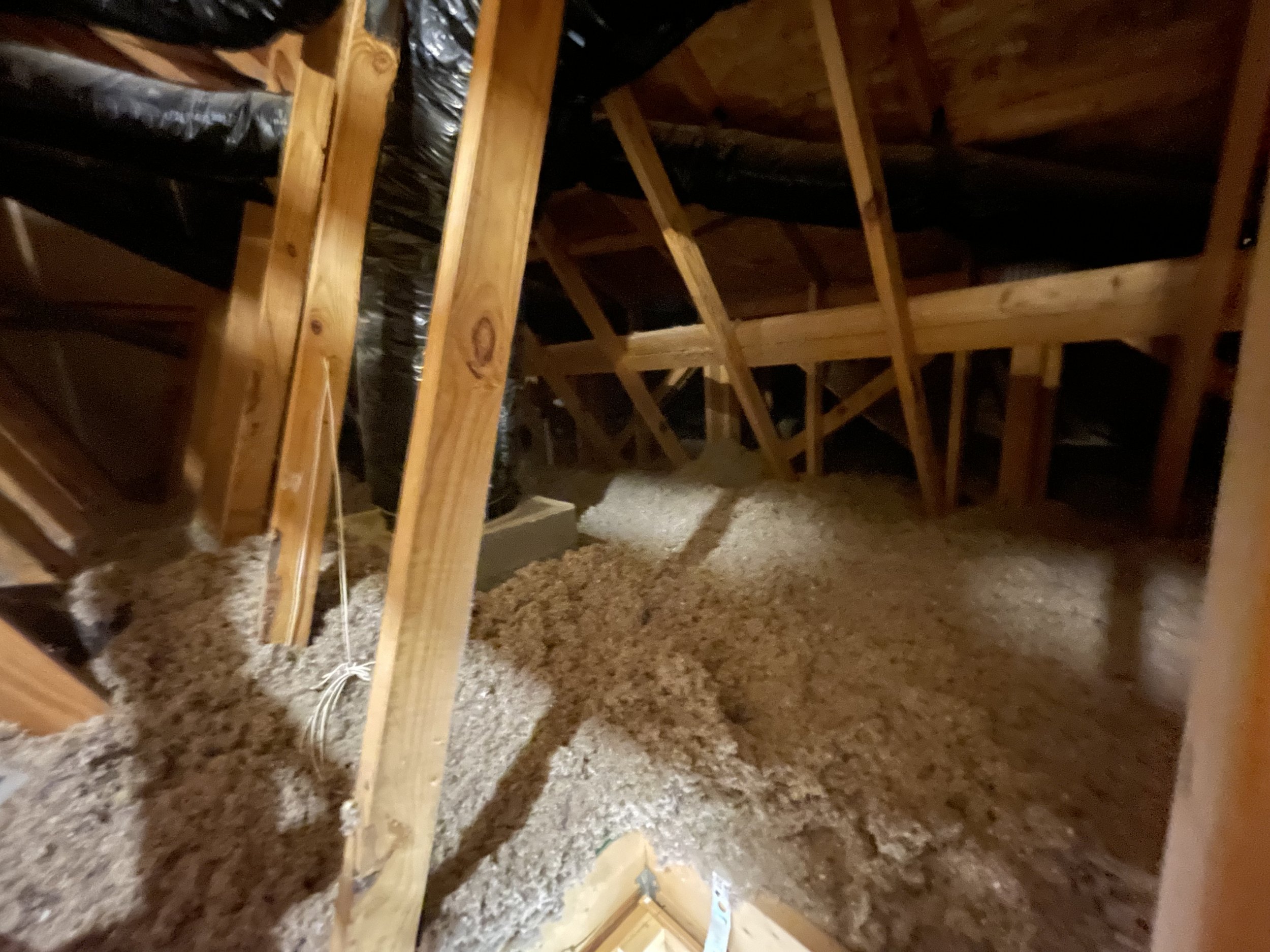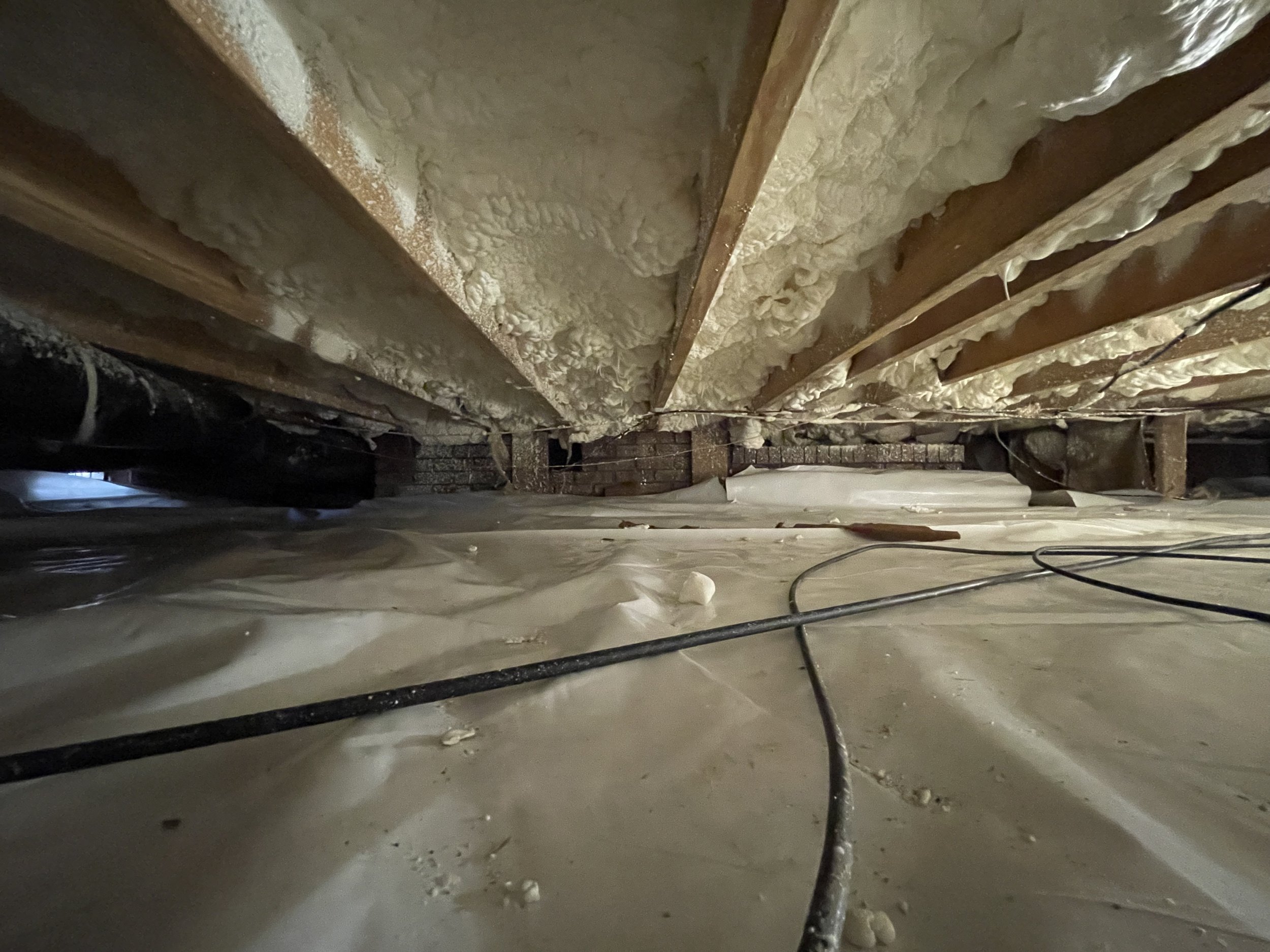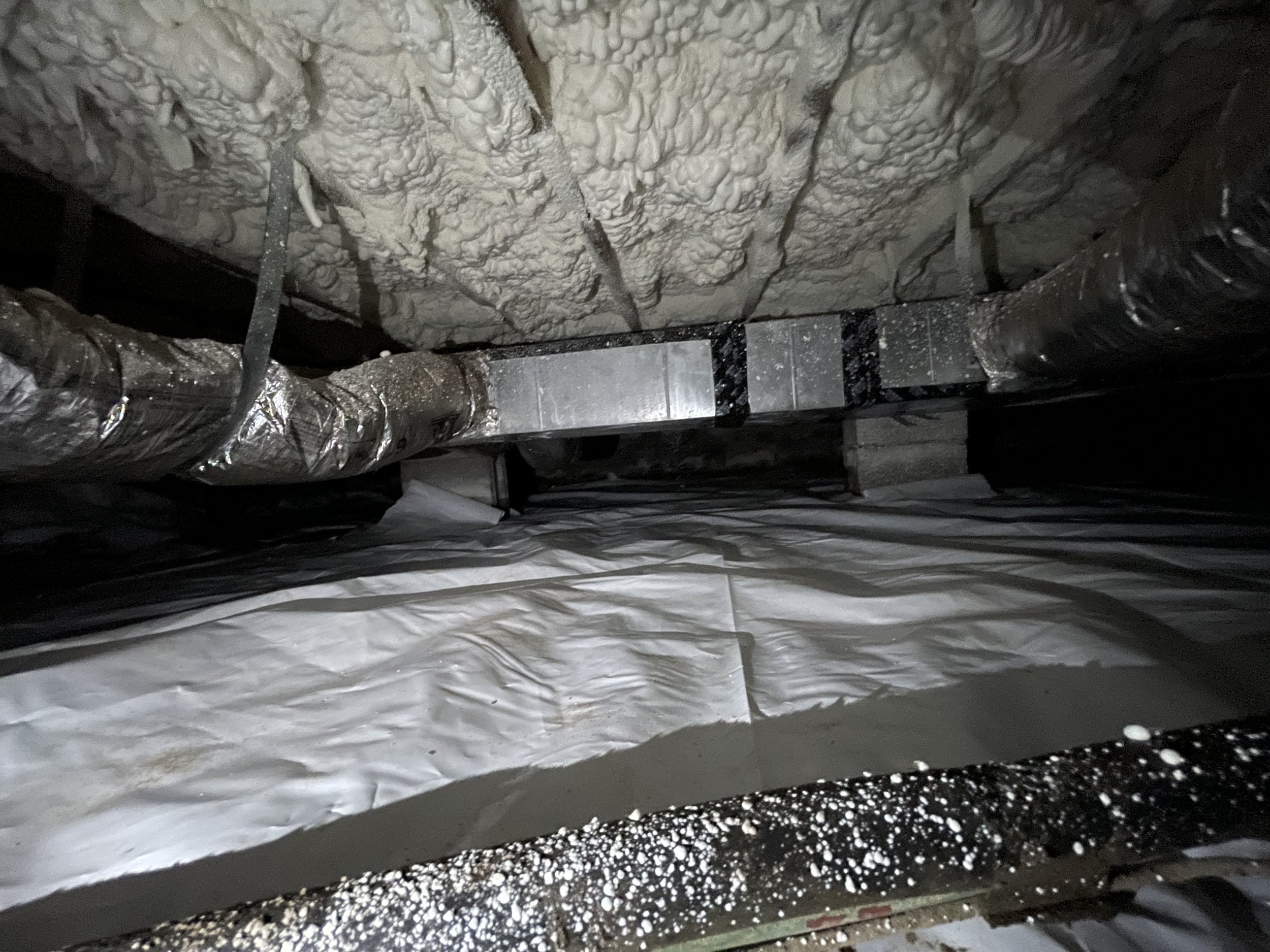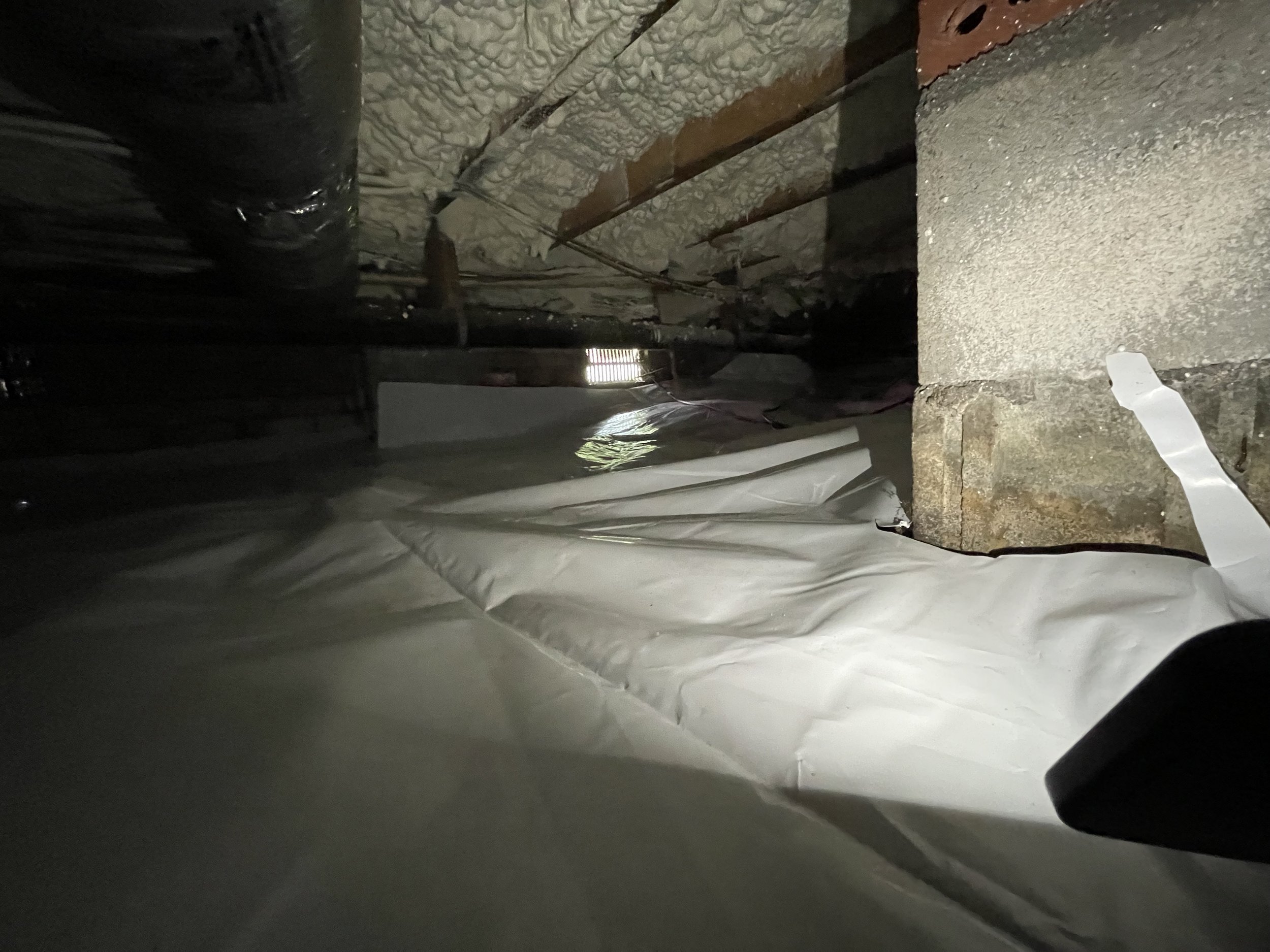Weekly Wrap up: 6/12/23 - 6/16/23
This week brought us a mixed bag of projects. We started out on Monday 6/12 with another closed cell spray foam install in a sealed crawlspace for The Energy Handyman. His crew did a stellar job on the sealed vapor barrier and other encapsulation details (which included building an awesome new access door). This was an older home near downtown Durham. Crawlspaces in older homes often have some quarks and can be difficult to properly air seal and insulate. This one in particular had a wide range of elevation and the foundation walls consisted of brick. Some areas had walls that were over 6’ tall, while others were less than 3’. This type of space is the reason why I am a big proponent for using closed cell spray foam rather than rigid foam board for the exterior insulation. Mechanically fastening foam board into brick is a nightmare. It often damages the bricks and doesn’t achieve a strong, durable, lasting hold. It is also nearly impossible to ensure a complete air/vapor seal. When we use closed cell spray foam, it completely forms to the foundation and adheres to the entire surface. On a foundation wall that is this inconsistent, the overall effectiveness, performance and durability of this closed cell spray foam ends up being far superior to rigid foam board.
Our technician Ajani was the lead sprayer on this job. He has been coming into his own as a sprayer. With every project he gets more consistent at hitting the proper depth and is becoming more intuitive when it comes to “reading the foam” to make small adjustments in temperatures and pressure to get things dialed in just right. The other 2 techs, Victor and Kayman, took an extra step in prep on this on that we are going to be instituting as a standard procedure in our crawlspaces from here on out. One of the issues with spray foam is that is produces overspray that can make things look a little messy. To mitigate this, the guys cut 2’ wide strips of 2mil plastic and taped it down around the entire perimeter. The end result was a clean tight line where the foam met the vapor barrier.
On the pics below, note all of the uneven areas throughout this space. You can see how The Energy Handyman’s crew had to get creative with the vapor barrier install. It is easy to understand why spray foam insulation was the only way to properly insulate this space.
On Tuesday, 6/13 we had 2 small blow in insulation projects in Raleigh. Interestingly, one of these projects called for fiberglass insulation and the other required cellulose. At the first project, We used 17 bags of Owens Corning L77 blown fiberglass to insulate this 1,000ft2 space. This was a project that we had removed the insulation months ago, after other renovations were done they were finally ready for us to come back to re-insulate. The second project was to re-insulate a 500ft2 area where the previous insulation was damaged by a plumbing leak. (Maybe I’ll do another article on why plumbing in an attic is a bad idea!!) For this we used a product that is produced right here in NC by Carolina Fibers. We’ve now used this product of a handful of projects and have been impressed by it so far!!
We used Wednesday 6/14 as a prep day for our upcoming project and on 6/15 we left the shop early to travel and hour and a half to Fayetteville for a little bit of a different crawlspace install. This was a tight space to access (as little as 18” clearance to the floor joists). I don’t like to take on projects sight unseen, but in this case we made an exception. The homeowner is very experienced in construction, new exactly what he wanted and was able to give me the information needed to put together and accurate quote. For this one, we removed the old batt insulation, installed a 10 mil vapor barrier and then insulated the subfloor with spray foam insulation. Our guys were efficient, organized and highly productive as they worked through this one. DeWitt was on sight, but wasn’t too helpful due to a sprained ankle he was nursing! The 3 technicians had the only insulation completely removed within a hour or so of being onsite. Next we started spraying the foam. Ajani started on the gun and did about 1/3 of the area, then Victor took over and finished the install. When victor started spraying, Ajani and Kayman began laying the vapor barrier. But the time victor finished all of the spray foam, Ajani and Kayman had finished 2/3 of the vapor barrier. With a 3hour round trip commute, I had expected this install to require a 12+ hour work day. However, we were wrapped up and back in Chapel Hill by 4:30pm. The transformation of this space was pretty incredible. We for sure made a major impact on improving indoor air quality in this home. As a side note, we also discovered a couple of plumbing leaks while we were working and alerted the homeowner so that he could have them repaired.
When the week started, We anticipated needing to have Friday off - however, the guys were efficient which made it possible for us to take on a last minute project in downtown Pittsboro for the Chatham County Habitat for Humanity. This was our second project for this amazing organization. We are always grateful for the opportunity to work with Habitat. We once again used Carolina Fibers cellulose insulation to insulate this attic space to R49. This exceeds the R38 code for our area. The folks at habitat are very mindful of building higher performance homes. I am always impressed by their attention to detail with critical air sealing and ventilation. Victor and Kayman worked with DeWitt to get this one done and the final result was fantastic! We hope the future residents in this home can benefit from lower utility bills and an overall healthier home.
That’s a wrap. Overall we were very happy with this productive week!
On to the next!!




